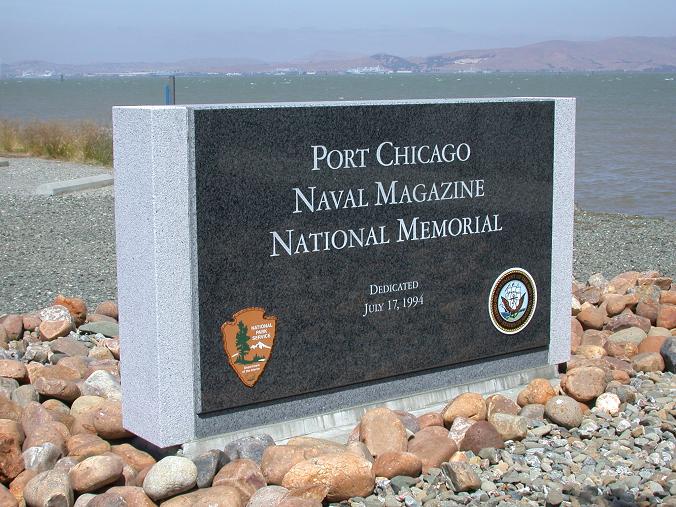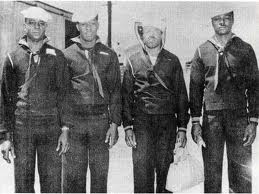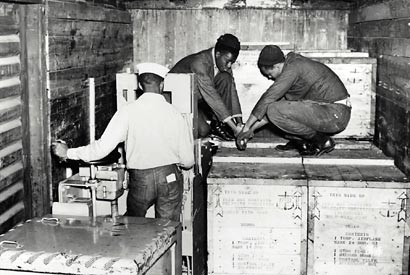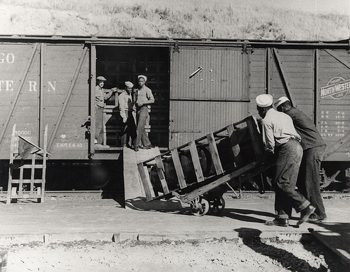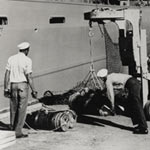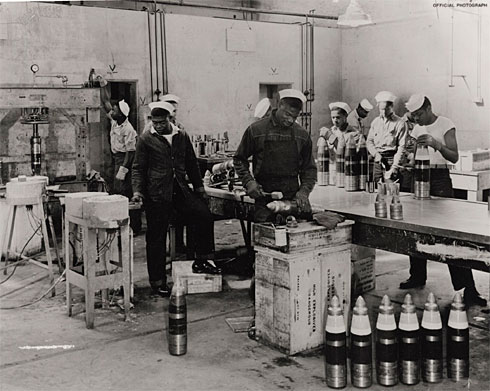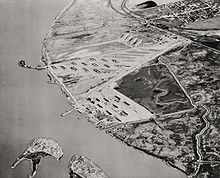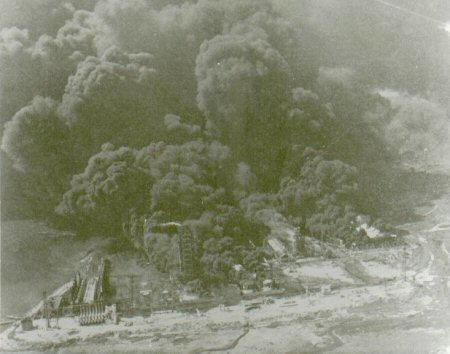Naval Magazine National Memorial
The Port Chicago disaster was a deadly munitions explosion in Port Chicago, California, United States. Munitions detonated while being loaded onto a cargo vessel bound for the Pacific Theater of Operations, killing 320 sailors andcivilians and injuring 390 others. Most of the dead and injured were enlisted African-American sailors.
A month later, continuing unsafe conditions inspired hundreds of servicemen to refuse to load munitions, an act known as thePort Chicago Mutiny. Fifty men—called the "Port Chicago 50"—were convicted of mutiny and sentenced to long prison terms. Forty-seven of the 50 were released in January 1946; the remaining three served additional months in prison.
In 1944, the Port Chicago disaster killed hundreds of Americans in a single blast. Was it an accident, or was it America's first atomic weapons test?On the night of 17th July 1944, two
transport vessels loading ammunition at the Port Chicago
(
accidental or not.
320 sailors were killed
instantly!
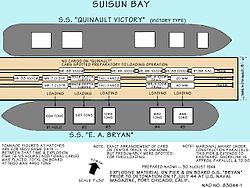
The E.
A. Bryan, the ship which exploded at Port Chicago,
was a 7,212-ton EC-2 Liberty ship commanded by
Captain John L. M. Hendricks of San Pedro,
The E. A. Bryan had been moored at Port Chicago for four days, taking on ammunition and explosives night and day. Some 98 men of Division Three were hard at work loading the Bryan, and by 10:00 p.m. on 17th July the ship was loaded with some 4,600 tons of munitions including 1,780 tons of high explosives.
The second ship, the Quinalt Victory,
was brand new; it was preparing for its maiden voyage. The Quinalt Victory
had moored at Port Chicago
at about 6:00 p.m. on the evening of 17th July. Some 102 men of the Sixth
Division, many of whom had only recently arrived at Port Chicago, were busy
rigging the ship in preparation for loading of ammunition which was
due to
begin by midnight.
